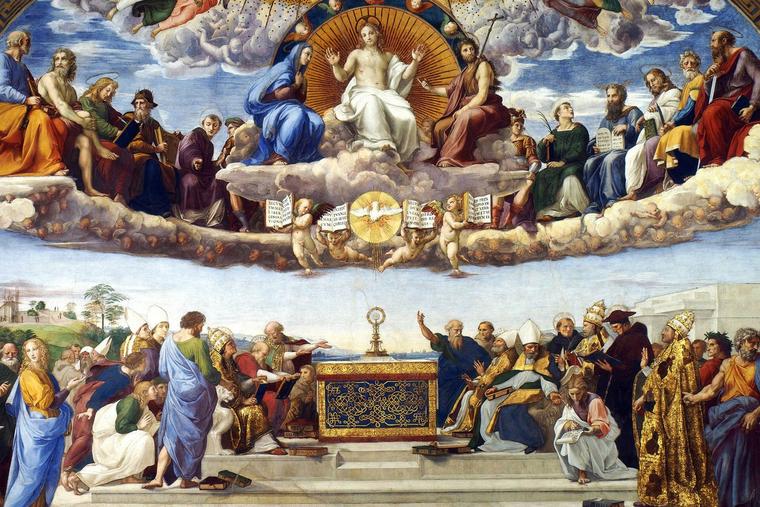- Feb 5, 2002
- 184,869
- 67,689
- Country
- United States
- Gender
- Female
- Faith
- Catholic
- Marital Status
- Married
- Politics
- US-Others
COMMENTARY: Jesus Christ is the true icon of human nature. This reality is at the foundation of every authentic moral doctrine.
There is much talk these days about the concept of the “development of doctrine” in the Church. The topic is a complex one and its various nuances cannot be adequately dealt with in a short essay. Nevertheless, it is also the case, given the importance of doctrinal truth in the life of the Church, that it should be possible for an average Catholic to make some sense of it without the necessity of having advanced theological training.
Along these lines, there is a certain level of common sense that should prevail in the Church’s doctrinal catechesis such that the plain meanings of words must not become so laden with endless theological qualifications that they cease to express the basic truths of the faith with clarity. Such obfuscations have the net effect of turning a doctrine into something deeply confusing and obscure and, in so doing, nullify the original plain-sense meaning that the doctrine was meant to convey in the first place.
We can deepen our understanding of what the full implications of a doctrine are. But that deepening of understanding is completely dependent on an antecedent stability of meaning — therefore, any alleged “development of doctrine” that begins with the presumption that this kind of stability represents a “backwardist fundamentalism” is immediately suspicious. Because if “looking back” at those stable meanings is something bad, then what we are dealing with in any so-called development of doctrine is not really development at all but simply an “innovation” that is grounded in nothing more than the gossamer wisps of the current zeitgeist.
I hasten to add that this need for a clear meaning to words and their stability over time does not mean that doctrinal formulations cannot at times employ the rather technical language of theological discourse in the interests of greater precision. But it does mean that even such highly technical language (e.g., “consubstantial with the Father”) denotes something clear and precise, which is the original reason for using more technical forms of discourse in the first place.
Continued below.

 www.ncregister.com
www.ncregister.com
There is much talk these days about the concept of the “development of doctrine” in the Church. The topic is a complex one and its various nuances cannot be adequately dealt with in a short essay. Nevertheless, it is also the case, given the importance of doctrinal truth in the life of the Church, that it should be possible for an average Catholic to make some sense of it without the necessity of having advanced theological training.
Along these lines, there is a certain level of common sense that should prevail in the Church’s doctrinal catechesis such that the plain meanings of words must not become so laden with endless theological qualifications that they cease to express the basic truths of the faith with clarity. Such obfuscations have the net effect of turning a doctrine into something deeply confusing and obscure and, in so doing, nullify the original plain-sense meaning that the doctrine was meant to convey in the first place.
We can deepen our understanding of what the full implications of a doctrine are. But that deepening of understanding is completely dependent on an antecedent stability of meaning — therefore, any alleged “development of doctrine” that begins with the presumption that this kind of stability represents a “backwardist fundamentalism” is immediately suspicious. Because if “looking back” at those stable meanings is something bad, then what we are dealing with in any so-called development of doctrine is not really development at all but simply an “innovation” that is grounded in nothing more than the gossamer wisps of the current zeitgeist.
I hasten to add that this need for a clear meaning to words and their stability over time does not mean that doctrinal formulations cannot at times employ the rather technical language of theological discourse in the interests of greater precision. But it does mean that even such highly technical language (e.g., “consubstantial with the Father”) denotes something clear and precise, which is the original reason for using more technical forms of discourse in the first place.
Continued below.

How to Tell Doctrinal Development From Cultural Corruption
COMMENTARY: Jesus Christ is the true icon of human nature. This reality is at the foundation of every authentic moral doctrine.
